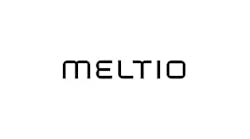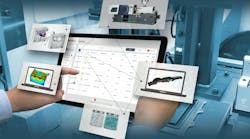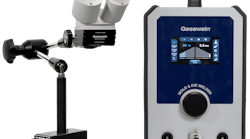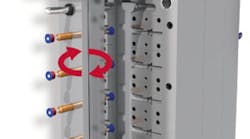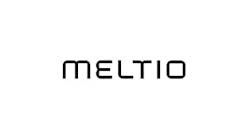By Karen Hanna
Vince Travaglini is someone who delights in others’ successes. As head of mold maker StackTeck, which recently began offering molds for PET preforms and developing automation, he’s overseen some himself as the company has grown and continues to innovate.
Members of his sales team initially groused when he suggested they work toward recognition as Certified Sales Professionals (CSPs), but, recalling years later how they crushed their exams, Travaglini still beams with pride. To him, the moment was worth more than money. In a recent interview with Karen Hanna, senior staff reporter for Plastics Machinery & Manufacturing, he said he finds purpose in guiding his company forward, while helping those around him become the best versions of themselves.
How did you get into plastics and mold making?
Travaglini: You could probably say I was born into it. My father was a founding partner of Tradesco [Mold Ltd., Toronto] in 1976. He used to take us back to the shop after dinner. He was making molds. He taught us a lot at home, how to use hand tools, and, at work, he taught us how to draw and things like that. We’d do our homework there while he was working on a project. But my dad really didn't encourage us to follow his path, as he wanted us to find our own.
I was mechanically inclined, I enjoyed math and sciences. I studied engineering here in Toronto, [then] went to work for McDonnell Douglas, did my co-op in aircraft.
Then, the recession came in 1991-92, and in ’93, dad approached me and said, “Hey, would you like to come to work at Tradesco?"
I joined as an R&D engineer. My dad always used to say, “Mold making is 50 percent opinion and 50 percent engineering.” The mold making field started to get more engineering-centric. We would calculate certain things instead of it being an art. “No, I think this is good enough. That’s thick enough. That’s close enough. That’s cold enough.” I had the privilege to apply engineering science to what we did at Tradesco. I was the only R&D engineer in the group; everybody else was a designer.
I’m the eldest of three, I was the only one that came to work at Tradesco. My brother’s an accountant, my other brother is an architect.
How did StackTeck evolve out of that?
Travaglini: It was a privately held company. There were three partners. In 1996, they sold to a private equity firm in the U.S. My dad was going to retire, and one other partner retired. StackTeck purchased Fairway Injection Molds [Inc., Los Angeles] in California and Unique Mold Makers here in Toronto. StackTeck was a holding company of these three companies. We ended up divesting Fairway in 2006. Tradesco was very strong in packaging, and Unique Mold Makers was very strong in closures. Fairway, on the other hand, was more into technical molds ... very different from how we worked. It was probably better we separated because we weren’t doing them any good, and we were struggling at the time. There was a recession in 2006 and 2007, so it just made sense. We separated; it was all on good terms. StackTeck continued from there.
I became engineering manager in 1998, after the company sold; unfortunately, my father passed just prior. I continued on with Tradesco and became the engineering manager, vice president of engineering, and had various roles throughout, and I’ve been very fortunate. In 2016, the CEO asked me to run sales. I thought he was crazy. I said, “Me, sales? I’m an engineer.” It took me all of about 24 hours to say, “What am I, crazy? I’ve been here for 25-odd years. I know all the people, I know the business, I know technology. The only thing I don’t know is how to sell.” And I wanted to learn. In 2018, our CEO decided to retire and asked me if I was interested [in eventually succeeding him as CEO]. I started to see the path; it was going that way. I said, “Hey, if I can jump into a role like sales, where I was a fish out of water, then I’m going to jump into the CEO role. as well. And I’ve got lots to learn.” The rest is history.
What sets StackTeck apart?
Travaglini: I think there’s a few key [factors] that make us different. The first one is what I call our horsepower, our capacity. We [have] 260 people. We can handle large OEM programs, 12 molds at a time. We do a lot of work for several large brand owners like Unilever, Procter and Gamble.
The other unique value proposition we offer is we’re a one-stop shop. Our business vision is to be the global partner of choice for injection molding solutions, which means we just don’t make molds, we bring solutions across the entire product line. We’re very proud to say that the breadth of the product line we have is extremely wide for a mold maker. We can prototype, engineer, manufacture, test. We’re doing integration with our automation. We also added PET to our molds [in] the last two or three years. We’ve got probably five significant orders right now, and more to come. Then, on the automation side, we’ve got probably 20 to 23 robots WIP [works in progress] in our automation group right now. We are flooded in those two areas.
Very few automation companies can bring an injection molding machine and the injection molding knowledge all in one room, so that is a huge advantage. We bring all that experience.
When we were younger, we were never scared to try something new. [We said,] “It’s going to be trial and error here. We’re going to try this new technology." A good example is, “How do we double the output from a stack mold? Well, let’s go four times.” Boy, were we proud we hit NPE in 1991, and we had a four-by-two mold running. Nobody understood how the heck we designed that hot runner and how we made that happen. That’s something that’s in our blood from our history, it’s in our culture.
I think the other thing that sets us apart is our global presence. We have sales reps in Mexico, Colombia, Thailand. We had one in Europe, and we’re looking to start that up again.
How has the automation business performed?
Travaglini: It’s been growth like crazy; it could even grow larger than our mold making business. We are challenged to keep up with the strong order intake.
We’re trying to hire as fast as we can. We are trying to enhance our brand to be automation with mold making, so people don’t just think of us as a premier mold maker [but] as a premier supplier of complete equipment for the injection molding industry.
What made you realize the time was ripe to move into automation?
Travaglini: It was very clear during COVID, many of our customers had a hard time getting employees to sit at the back of a machine and stack parts, inspect parts, put them in a box, etc. … where they were forced to automate. The requests started coming in tenfold, [with people asking], “Can you put those parts in a box? Can they be inspected? Can they be sleeved? Can they … ? Can they …?” Prior to that, we had people managing it; now, it’s, “Can we automate it?”
What kinds of automation challenges can StackTeck handle?
Travaglini: I would say most of the needs are in one of two areas, which is either just taking the part out and handling it and controlling it and stacking it or adding the label. Now, we’re being challenged with even more complicated things where they want us to assemble parts. Let’s say you had a family mold and you had two different parts, can you grab that part, grab that part, put them together, rotate them and put them on a conveyor? We’re not there yet. But, of course, we’ll try anything.
That’s where the company is going. Our ownership group believes that’s the right direction, and we’re here to fulfill the vision.
What’s most rewarding about your job?
Travaglini: I get satisfied in my job when I see people complete things or achieve certain things that they never thought possible. I feel purposeful when I can ignite the passion, energy and work ethic of people so they can grow to be the best version of themselves. I really enjoy motivating people. When someone says, “Hey, it can’t be done, or I can’t get this done, or we’re not going to get there,” I love it when the person exceeds their own expectations.
I'll give you an example:
When I joined the sales group, I did not really have any sales training. Jordan [Robertson, currently VP of business development and marketing] introduced me to someone that certifies salespeople to become a certified sales professional (CSP) in Canada. When I proposed [the] training, everyone’s rolling their eyes, “Well, who’s going to tell me how to sell a mold or automation? I’ve done this for 30 years.” Little did I know, when we went through the process, at the end of it, there was a three-hour written and two-hour oral exam. Once the team found this out, you can already sense that, “Oh, there’s no way this is going to happen ... I really don’t know if this is the right thing to do. …" As we’re getting close to exam time, people are starting to form study groups, they’re starting to bond, and we’re having lunch sessions. And we’re doing lunch-and-learns and things like that. By the way, I was part of that, too. I took all the lessons. I wanted to get my CSP. I figured if we can all do this together, I can speak the same language as my team. So, fast forward, we all do the exams, and the teacher said, “... Most of the time 75-80 percent pass and 20 percent fail. That’s just how it’s going to be and maybe 5-10 percent pass with distinction.” July 2017, [the instructor] calls me up [and] says, “You’re not going to believe this. Everybody passed.” I think 60 percent with distinction. You couldn’t give me a million dollars; it wouldn’t be worth it. This was better than [that]. It was incredible that the whole team, who thought, “Why are we doing this?” it all worked out. Everybody accomplished the goal, and no one thought we’d be that successful. I was proud of the team; they did it. They all found a way.
What trends do you see in moldmaking or in automation? And what challenges do you see?
Travaglini: The speed of everything [and] without a doubt the digitization of engineering in 30 years. [When] I started, there were guys on drafting boards, and then we went to 3D CAD and CAE. You pull a kid out of school and show him a 2D CAD, it’s an insult, whereas, when I finished [school], 2D CAD was brand-new.
Mold engineering now is an absolute science. It [went from] what I call an art or a black magic art to a science. We can do a filling analysis, a CAE stress analysis, you name it, we can do some kind of in-depth analysis to confirm what we’re seeing in real life or predict what’s going to happen and then [change] our designs accordingly. There was a time when filling software came out. It was so expensive; the computer was so expensive. Now, I can pull a kid out of school and throw him in front of a computer, and he’s doing it in 10 minutes. The other thing that I’d say [are] the cycle times and part weights; molds are faster, machines are faster, and efficiencies are up. Part weights are down. We’re cranking out 3-second cycles; when I started, it would have been 7 or 8 seconds, the mold would have run in a single-face mold. Now, we’re cranking those out in stack molds.
What’s your outlook for mold making in North America?
Travaglini: There’s been a lot of reshoring since COVID. It only makes us stronger. Our job is to bring costs down so we can become more competitive, and I think overall we have. I would say that’s one of our biggest challenges is watching our costs, using automation as much as possible to reduce our costs.
The other trend I see, which is very new and strange to the old mold makers, is working with our competitors. Some of the large OEMs gather the mold makers and say, “We’ve got a lot of work, and we need you to play nice, so, we’re going to have one design, and we’re going to make 20 molds and you’re going to get one … you’re going to get 10, whatever the distribution is, and we’re going to play nice together because there’s work for everybody, and we’re going to distribute the molds throughout the world to one standard.” If you dated back to when I started in this industry, mold makers kept everything to their chest. “I can’t show anything.” Once we made that mental step that it’s better if we work together than compete, we’re all going to be happy. Everybody brings something different, but we’re all going to walk away with work. If we take that mentality, we can all be successful.
I’m optimistic as a supplier of tooling, and I’m optimistic as a supplier of automation.
Travaglini: The challenge everybody has is finding talented workers. We used to be able to find somebody with 10 years of mold-design experience, 10 years of mold making experience; that’s hard to find now. They’re not teaching it in schools. The number of smaller mold makers has amalgamated or gone away. To find new talent is impossible. We’ve created our own internal design school a year and a half ago. We had a class of six students go through and train for six months, not touch a production job, [just] learn how to use the software at StackTeck, learn how to design at StackTeck and learn our processes. Otherwise, we’re not going to find someone walking down the street.
[An additional challenge is] plastics, in many cases, does not have a good reputation. The one thing that we’re doing here, we have an [internal environmental] IMPact team. We teach our people about the positive things about plastic, and how to manage recycling properly and how to separate [waste]. We encourage, and we educate. Our job is to educate people about the good plastic does, and that if we properly dispose of it, it is less cumbersome. That’s everybody’s responsibility to make sure we are responsible with used plastic.
When selecting students for StackTeck’s training program, what traits did you seek?
Travaglini: First, attitude, grateful to have a job, want to work hard. No. 2, most of them had either some CAD background, or a couple years in some kind of design. It was very minimal; we taught the rest because we said, “Look, we want the right attitude. We want the skillset with the software. We’ll teach you the mold-design side." We had people with 20 and 30 years’ experience teach our own new candidates. [We had] six graduates from the program.
Can you tell me more about Impact?
Travaglini: We have three pillars in our Impact group: One’s community, one’s technology, and the other one [is] environment. It’s an internal group, with myself and a couple other senior people; the majority of the people are younger, interested in preserving the environment. One thing we did was, “How do we separate our metal [waste] from our plastic from our cardboard?” We made sure that that path from where we dispose it to the truck that goesWhat do you like to do outside work?
Travaglini: When I’m working, it’s tough. I’m here 12 hours a day. I try to balance my time where I make family time and I make time for my buddies every weekend. The first thing is, of course, being with my family. I remember, we got married; [that] just felt like yesterday. We’ve got three girls, [ages] 26, 24, 21. The 26-year-old just got married … so, just really appreciating life and watching that next generation come along. Family, friends, travel, those are all fun things.
When I get home, either I’m going to go for a run, or I’m going to get on my Peloton, or I’m going to the gym because it just settles me down. When you go for a run, your brain is at its clearest, and you can actually get some great ideas about work. When I run, I feel great. A standard run’s about 5 or 6 miles; on the weekend, I'll do 7 or 8. I’ve done lots of half marathons. I’ve done a 30K. StackTeck has a great community; we have a social committee, and we have health and wellness group. One of the chairs of the health and wellness group said, “Hey, old man, can you run 30 kilometers?” So, we did a 30K in March. It was amazing, just [to] accomplish something I never accomplished before, and now she’s pushing me for a 40K. We’ll see. I just need more training time.
Your LinkedIn profile indicates you’re involved with Knights of Columbus. What do you do with that organization?
Travaglini: They’re a Catholic fraternal organization dedicated to helping families in need. If a family lost a father and the wife was on her own with the children, they would go and help. They would, say, cut the grass, clean the house, do chores around the house, to help the family out. I like to go around Christmas time. A couple of years ago, I was doing the barbecue. The money they raise goes directly to the family. You talk about being satisfied and what makes you feel proud, there’s nothing more emotional than when there’s a family in need, and you're giving them a check. It humbles you really fast.
What would you like your legacy to be?
Travaglini: Raising a great family and starting a family and just being proud of that.
Being 30 years in this industry, and working for one company specifically, I’m really grateful. I’m blessed to work with great people, seeing different parts of the world, bid on some great projects, some tough ones, some easy ones.
I’d like to be known as being a key part of the generations of growth at StackTeck. I’ve seen really bad times, I’ve seen really great times, but, overall, I’d like to be known as a key contributor to the company’s growth, not only [as] a premier mold maker, but also the most modern injection molding system provider in the world. The other thing is my hope that people see me as a key part of keeping up with the fast pace of the world’s changing culture, technology and modern work environment.



